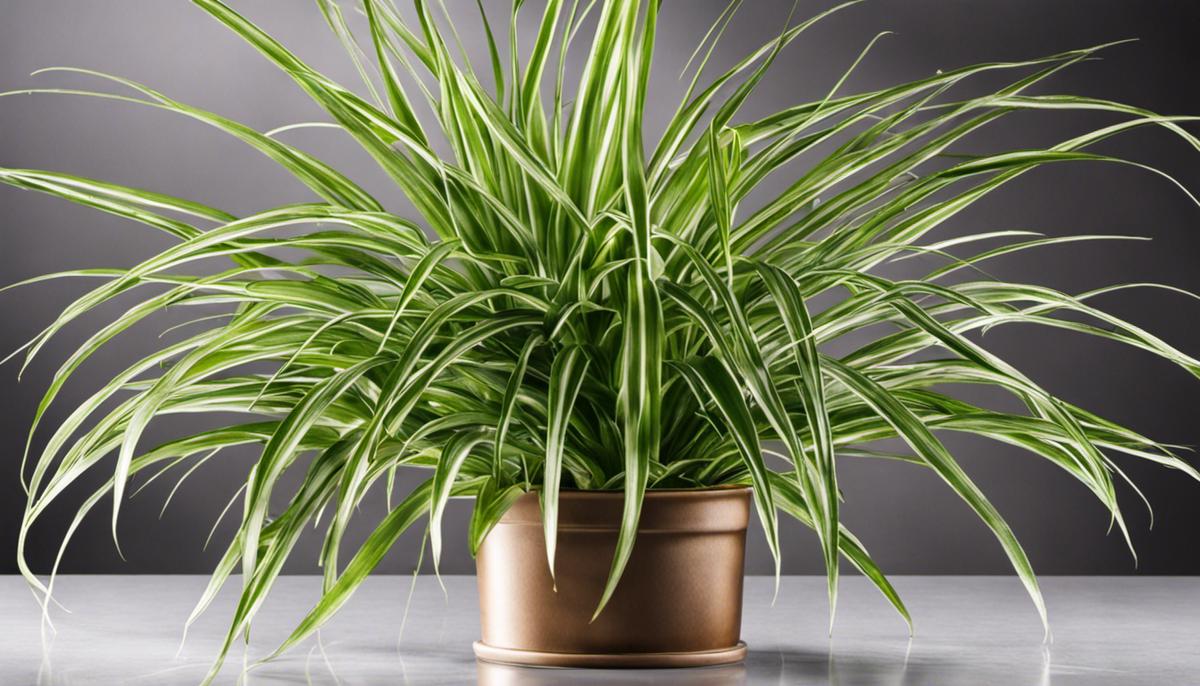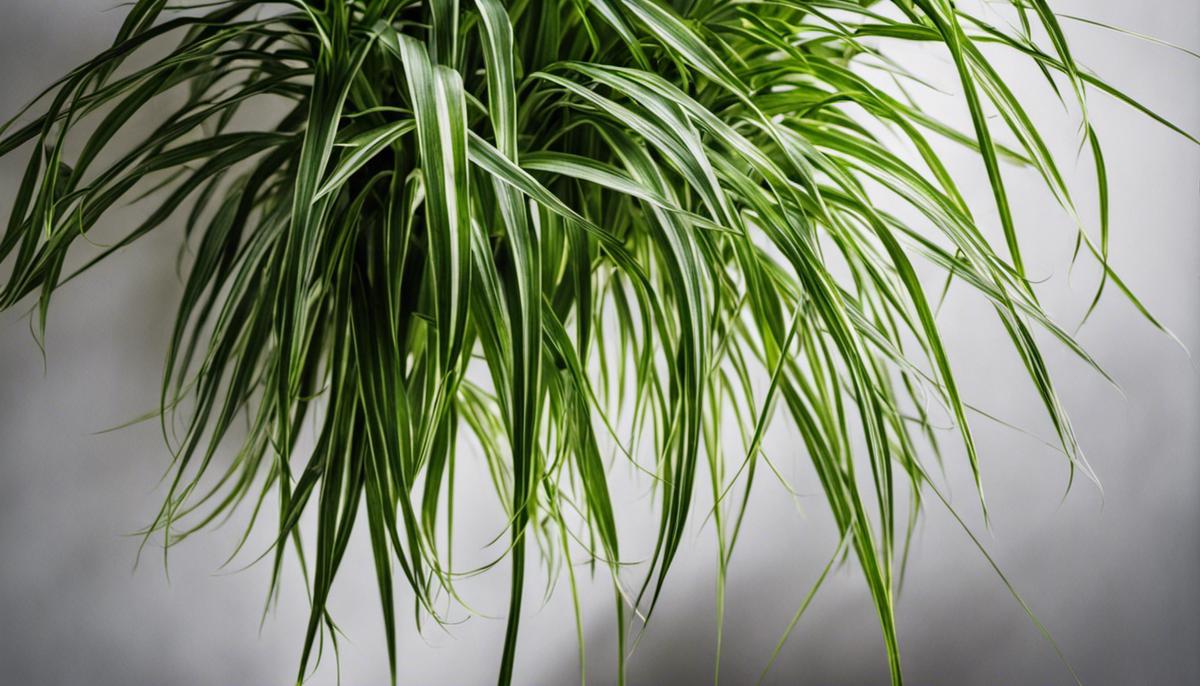

Agridisk
Egypt - Alexandria

How to Grow and Care for Spider Plants
Description: Spider plants are considered one of the best choices for agriculture, because they grow quickly, do not require constant attention, do not cost a large investment, and are of great importance in purifying the surrounding air. According to NASA research, the leaves, soil, roots and microorganisms of many houseplants can They act as a natural air filter to reduce ambient pollution, and according to research, spider plants removed 95% of the toxic formaldehyde from the air in an airtight glass container within a 24-hour period. They grow in a well-drained soil mixture, and they are plants that love moisture and hate being too dry or too wet. Keep them in moderate, indirect sunlight, as they cannot face direct scorching sunlight, and direct sun causes their leaves to burn and brown spots to appear on them. Plants sprout fairly quickly and can easily become pot bound. Spider plants can be replanted approximately every two years, and can be grown outdoors as an annual plant during the summer, and can be kept near the bed to purify the air, and as long as it is away from direct sunlight it will be fine. Spider plants are an excellent addition to any indoor or outdoor gardening arena, admired for their hardiness, attractive foliage, and air-purifying capabilities. To ensure that these plants thrive, this article will provide an essential guide on everything you need to know about potting, caring for, and troubleshooting common spider plant problems. From an in-depth understanding of best potting practices, such as choosing the correct soil and pot size, to a comprehension of the crucial care factors--light, watering, and temperature, you'll gain the necessary knowledge to foster healthy growth, ensuring that your spider plant brings fulfillment and beauty to your gardening journey. You might be wondering why you're here. What's so fascinating about spider plants, right? Prepare to be amazed. These beauties have an irresistible charm that might just make you dump your other houseplants in a heartbeat. And don't worry, you don't need a PhD in botany or a magic thumb — just a few simple steps and anyone can grow these plants successfully. But, remember — the secret is in the details. Begin with the Basics: Choose the Perfect Pot Spider plants are not prissy about their container, but don't mistake that for carelessness. They do prefer a container with proper drainage holes — spider plants hate wet feet! A ceramic or plastic pot is a great choice, with the ideal being a pot that's wider than it is deep, to accommodate the plant’s shallow root system. The Perfect Potion: Potting Mix Matters Next, let’s talk about the all-important potting medium. It's simple. Spider plants thrive in a well-draining soil mix because they're prone to root rot in water-logged conditions. An equal mix of potting soil, perlite and peat moss will do the trick. Roots and Rhizomes: Planting the Spider Plant Now comes the exciting part: planting! Ensure your new plant baby has enough moisture by soaking it in lukewarm water for 10-15 minutes. This eases the spider plant effortlessly from its previous pot, setting you up for a smooth planting process. Then, fill the new pot half-full with the prepared potting mix. Place the spider plant in the center and gently spread out the roots. Top up with soil, firming gently around the base of the plant. Remember, the crown of the plant should be at soil level — not buried. Considerate Care: Watering and Nourishment Watering spider plants is where most enthusiasts go wrong. Tread on the side of less is more. Water thoroughly but allow the soil to dry out between drinks. And while they're not heavy feeders, a dose of balanced houseplant fertilizer every two weeks during the growing season will keep your spider plant vibrant and create better conditions for producing 'spiderettes'. Light and Temperatures: It's Not Rocket Science Spider plants are fond of bright indirect light — direct sunlight can scorch their attractive leaves. A north or east-facing window is typically perfect. They're also not finicky about temperature but do best between 55 and 80°F. Infringing Invaders: Pest Control Spider plants are quite resistant to pests. However, if aphids or spider mites do make an appearance, a shower of water or a swipe with insecticidal soap sends them packing. That’s about everything one needs to grow a flourishing spider plant. With this treasure trove of insightful tips, you're all set. Happy planting! The magic of a thriving spider plant does not stop with finding the perfect pot or right potting mix. So, let’s explore the remaining aspects of nurturing them! Tip #1: Regulating Humidity: Spider plants love humidity, it’s in their blood! So, placing them in rooms like kitchens and bathrooms can recreate their natural, tropical habitat. If these locations don't fit into your home decor scheme, you can also try a pebble tray! Just fill a shallow dish with pebbles, add water, and place your spider plant atop. The evaporating water raises the moisture level around the plant, making it splendidly happy. Tip #2: Seasonal Adjustments: Remember, spider plants are like pets, they need different care depending upon the season. Cut down on watering and hold back the fertilizer during the winter months; they are not big over-eaters during their rest period. Come spring, you can increase both as they kick back into active growth. Tip #3: Giving Them a Boost: Repotting your spider plants every couple of years encourages healthy growth. It can prevent root bound conditions, where the roots basically take over the pot, which can put a crimp on their growing style. Tip #4: Recuperation: In case your plant took a hit and needs to recover, due to say overwatering or sunburn, place them in indirect light, hold back on the water and cross your fingers. Spider plants are robust and bounce back impressively. Tip #5: On Propagation: If you're looking to multiply your leafy brood, do it the spider plant way, by propagating the spiderettes! Once the spiderettes form roots, they’re ready to begin life on their own. Simply plant in a new pot filled with the preferred soil mix mentioned earlier. Tip #6: Dealing with Yellow Leaves: Yellow leaves can be alarming, but not always! If it's just a few, remove them, your spider plant’s just adjusting. If it's widespread, it could imply overwatering, try dialing it back a bit. Tip #7: Browning Tips: An tell pet keepers face – the brown tips. This usually means the water you’re using has too many salts, minerals or fluoride. Switch to distilled or filtered water and watch those tips turn green again in no time! Plant enthusiasts, remember that the joy of nurturing any plant lies in its journey. The spider plant is no different. Even though it’s affectionately known as the 'hard-to-kill' plant, it needs a little love and care, just like we all do. Embark on this verdant adventure and immerse in the fulfilling art of indoor gardening with spider plants. Happy planting! Let's unravel the mystery behind an unhealthy Spider Plant! The chlorophytum comosum, commonly known as the Spider Plant, is robust and adaptable. However, when it is unwell, it sends out clear distress signals. While the problem might seem daunting, the solution could be as simple as providing that extra bit of care. Occasionally, Spider Plants struggle with fluctuations in humidity levels. Like many plants, Spider Plants prefer to be in an environment with a humidity level around 40-50%. It is beneficial to use a hygrometer, an inexpensive tool which measures humidity levels. Should the humidity levels drop, placing a saucer filled with water near the plant, misting the leaves, or moving the plant to a more humid room, like the bathroom, could solve the problem. As seasons change, so do Spider Plants' needs. As they acclimatize to their natural setting of tropical rainforests, the plant's need for water increases during summer and decreases in winter. Remember, moderation is key when it comes to watering, and overwatering can cause more harm than under watering. Every Spider Plant will need repotting at some point. This is due to their fast-growing roots that could lead to an overcrowded pot, often referred to as being "pot-bound". An indicator of this issue is when roots start peeking out of the pot's drainage holes. When this happens, move the plant to a pot 2 inches larger than its current size. If a Spider Plant seems to be under an inordinate amount of stress, provide the necessary period for recuperation. Recuperation means withholding fertilizer and giving the plant some quality 'quiet time'. This plant recuperation phase needs patience and tender loving care! Propagation is a natural part of a Spider Plant's life cycle. But, it is crucial not to propagate a Spider Plant from its spiderettes when it is unhealthy. This could stifle the growth of both the parent and the new plant. Yellow leaves on a Spider Plant may be a leaf's natural aging process, but they can also indicate an overwatered plant. Let the potting mix dry out before watering again. If a yellow leaf is noticed, rather than snipping it off, it is recommended to keep it until it's completely brown. This gives the plant valuable time to reabsorb nutrients from the leaf. Browning leaf tips can indicate low humidity, or the plant reacting to the fluoride found in tap water. To rectify this issue, consider placing the Spider Plant in a space with better humidity, or use rain, distilled or purified water. Cut off the brown tips to stimulate growth, but remember to use a sterilized scissors to avoid introducing any pathogens. Finally, if you see any pests like aphids, spider mites or mealybugs, it's necessary to act expeditiously. Isolate the plant and inspect it regularly until the issue is resolved. Regular pest inspections are also recommended as part of a Spider Plant's care regimen. Despite the issues they may present, Spider Plants are a rewarding hobby. They're versatile, hearty, and stunning--a triple threat in the world of household plants. With attention to detail and lots of love, anyone can nurse an ailing Spider Plant back to robust health, and enjoy the riotous greenery it adds to their living space. Every plant brings with it a unique set of challenges and rewards. With the spider plant, while there might be instances of leaf tip burn or pesky bugs, the solutions are practical and manageable. The knowledge that you now possess about spider plants' optimal growing conditions and care routines should assure a fascinating, rewarding experience in your gardening pursuits. Remember, it's not just about maintaining the plant alive but more about enriching its life – and in the process, enriching yours. The joy of witnessing your spider plant grow and thrive is truly immeasurable, a testament to the beauty of nurturing life.
How to grow spider plants
Planting Spider Plant
Placement, Planning, and Planting: Your Ultimate Spider Plant Guide

Caring for Spider Plant

Dealing with Common Spider Plant Problems